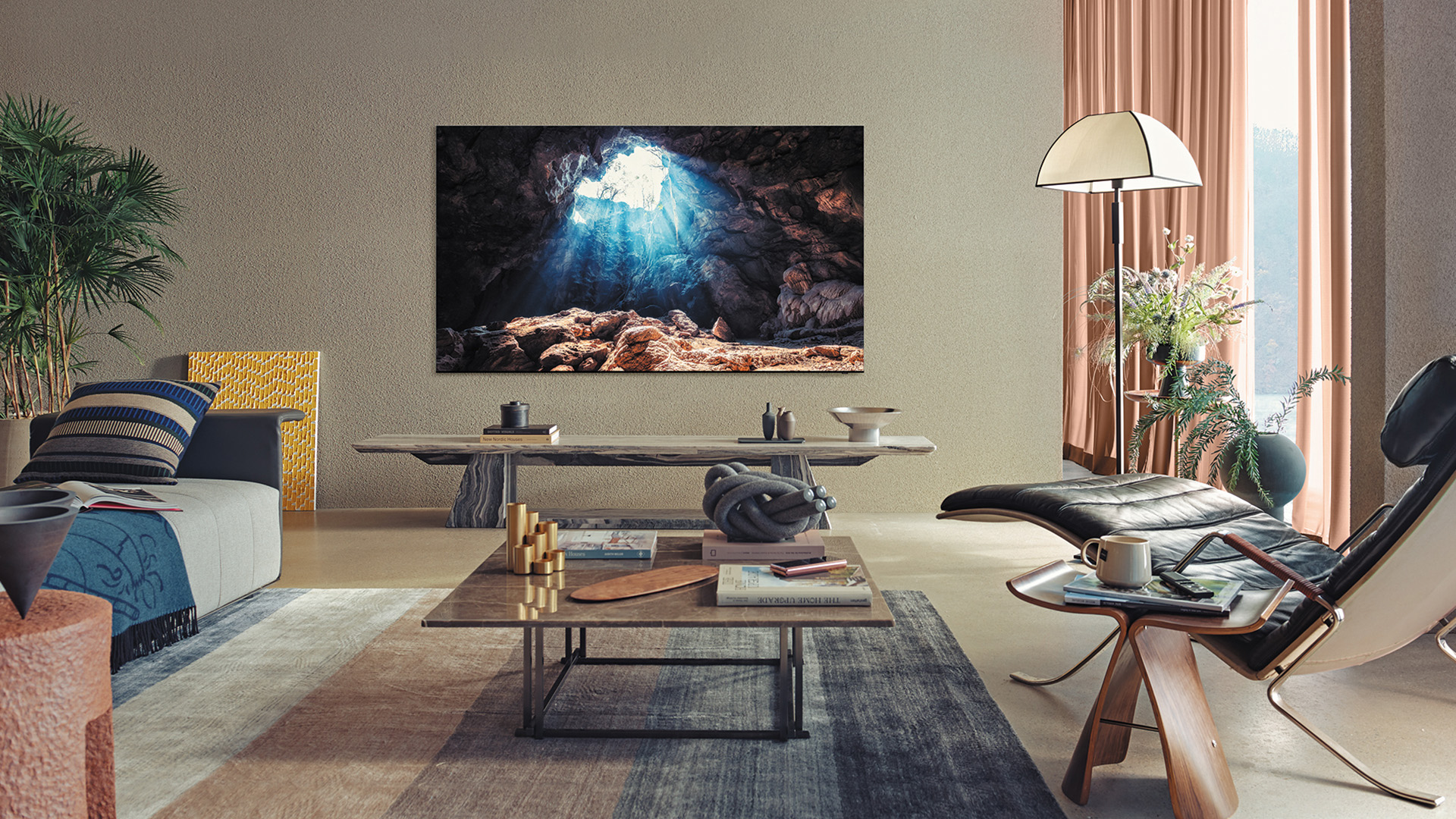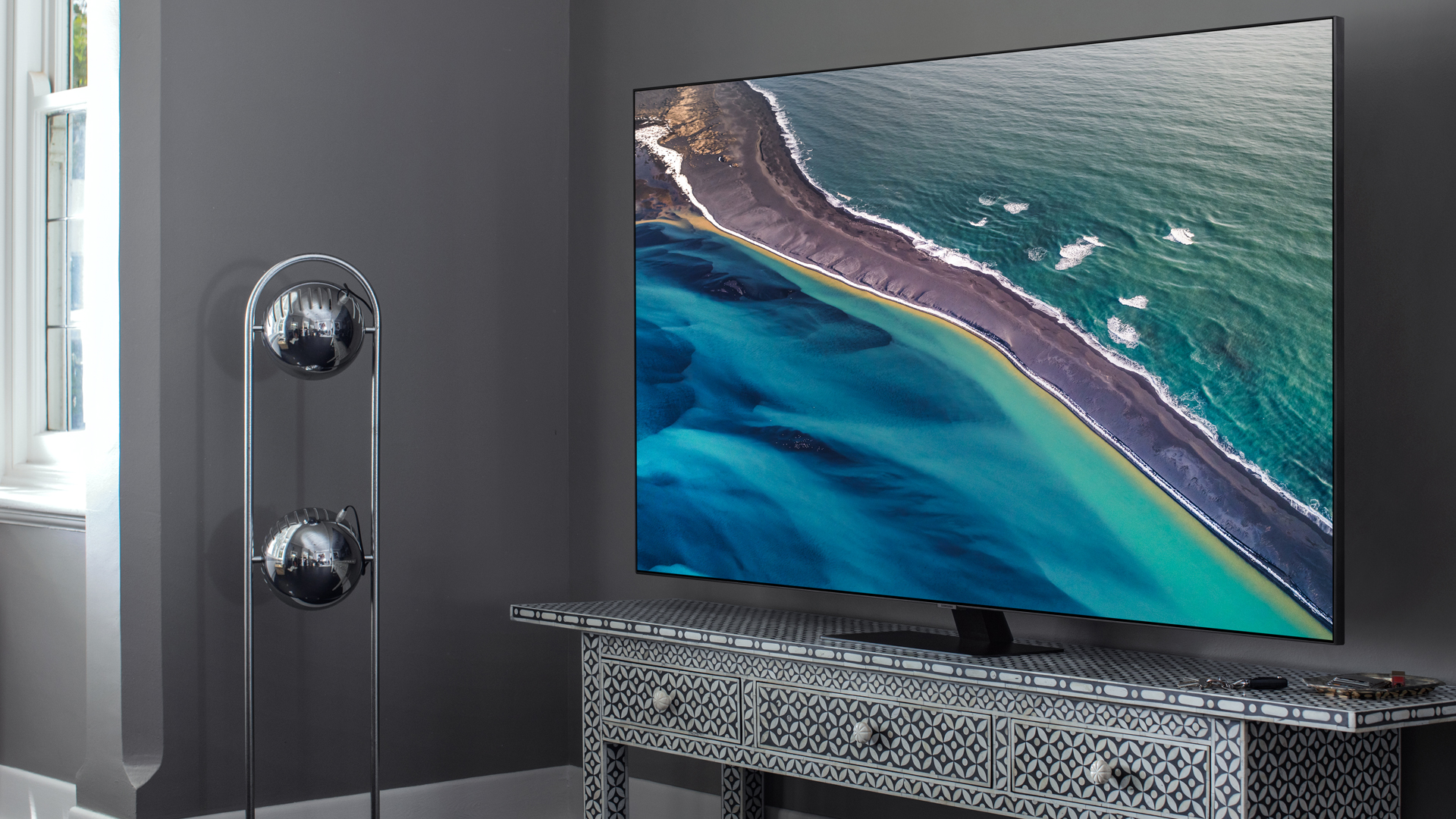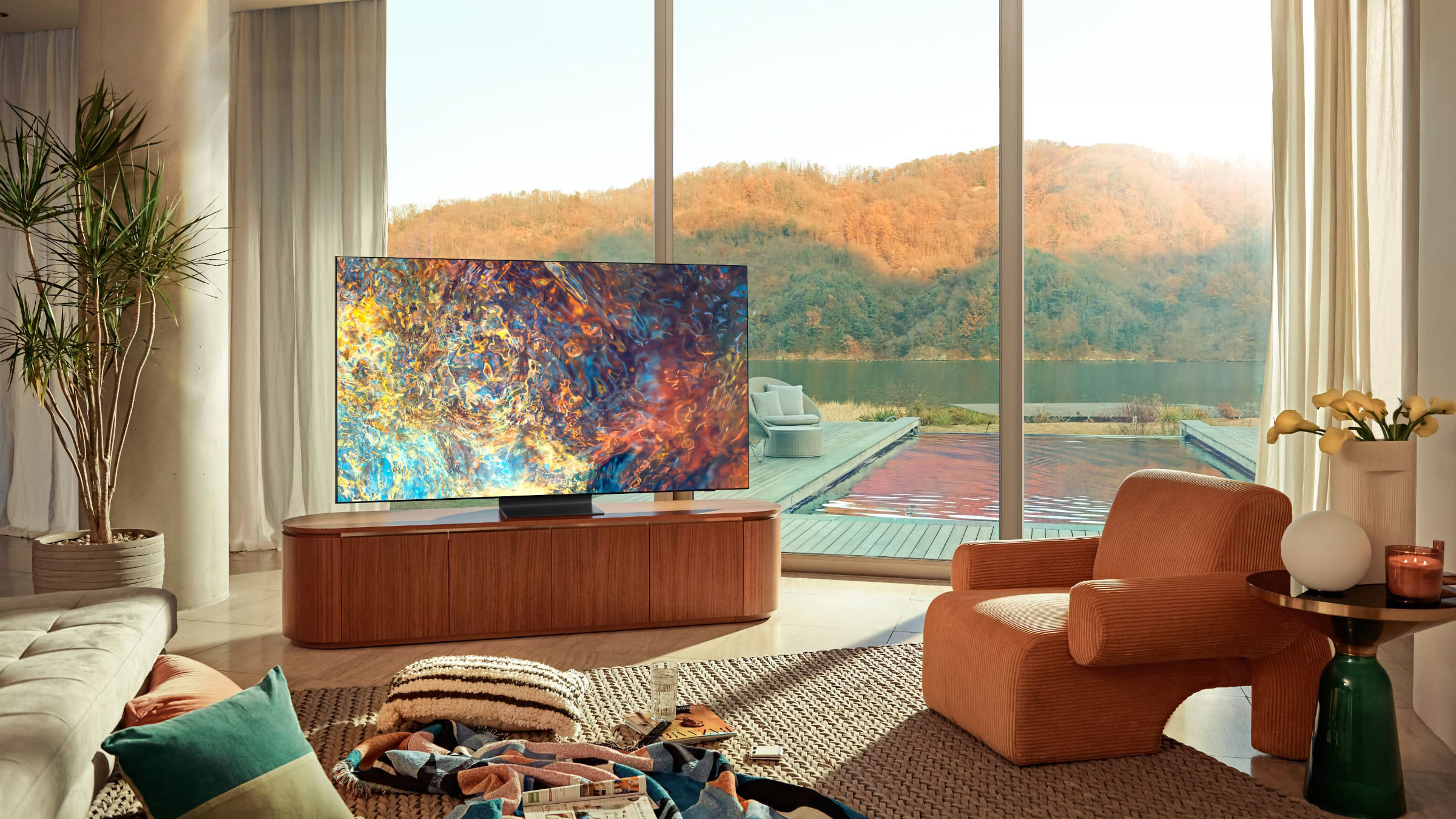QLED TV vs Neo QLED: how Samsung TVs are changing
Mini LED is the key

Anyone paying attention to 2021’s new Samsung TVs will notice that there’s some new terminology being thrown around: Neo QLED.
Yes, there are enough acronyms in the TV market already, and you may feel exasperated at having to constantly learn new words and terms. However, Neo QLED does mark a significant change in Samsung’s TV technology, and if you want to keep abreast of the latest and greatest televisions, you’ll want to get your head around it.
It's not the same thing as QLED, which has been Samsung's premium TV technology for the past few years.
So what is Neo QLED, what marks it out from regular QLED, and what TVs does it apply to? Here’s what you need to know.
What is Neo QLED?
Neo QLED is an evolution of Samsung’s existing QLED technology, which stands for ‘quantum dot LED’. That’s because QLED TVs use a ‘quantum dot’ filter to increase contrast and color vibrancy.
Samsung has made sure its premium televisions all use QLED technology since 2017, when it rebranded its SUHD (Super UHD) range, at least partially to invite comparison with the ‘OLED’ televisions that now hold sway over the market.
The impact of a QLED panel varies depending on a variety of factors, though, including but not limited to the processor being used, as well as the efficacy of the backlight behind the panel.
Get daily insight, inspiration and deals in your inbox
Sign up for breaking news, reviews, opinion, top tech deals, and more.

Lower-end QLED TVs make do with an edge-lighting system that – as the name suggests – lights up the panel from two sides, rather than directly behind it. This allows the TV to stay somewhat slim, but means that the light is spread inconsistently across the screen, and won’t make for the best picture.
High-end QLED TVs will use a Direct Full Array backlight, which shines light through the panel from behind, and will offer more precise brightness control and consistency (therefore allowing better contrast between light and dark parts of the screen, crucial for effective HDR highlights and general picture excellence).
Even these TVs vary in quality of backlight, though, depending on the peak brightness available (1,000 nits, 2,000 nits, etc) and the number of ‘dimmable zones’ that can vary in their level of brightness. More zones means more control over small and specific areas of the screen, so you want as many as technically possible.
Neo QLED changes things up a little. The direct array is replaced by a Mini LED backlight, using tens of thousands of tiny LEDs for vastly more precise brightness control. It’s not quite on the level of OLED, with its individual pixel control, but it’s certainly a step up for LCD screens.
What difference does this make?
If it’s deployed effectively, Mini LED backlighting should allow LCD panels to get much closer to OLED levels of performance than has been possible before. These theoretical advantages are pretty compelling.
And, of course, that’s without OLED’s perceived problems: LED/LCD technology has never been the subject of screen-burn scare stories, nor does it fall prey to the eventual but inevitable drop-off in performance that’s the price of the ‘organic’ element of OLED.
Of course, the success of Mini LED will come down to the way the technology is implemented. There’s a lot of variation in the performance of similarly priced, similarly specified LED-backlit LCD screens – you only have to have a quick glance at our numerous TV reviews to see that. And if some TVs are found wanting when it comes to controlling a few dozen backlight dimming zones, can they really be expected to be any better when they have control of what could be thousands?
Read more: What is Mini LED?

What Neo QLED TVs are there?
2021 will be the first year we see Neo QLED TVs enter the market. All of Samsung’s new 8K TVs will be Neo QLED, continuing Samsung’s tradition of piling together the most advanced TV specifications at the top of its range.
That means the QN900 8K QLED, QN800 8K QLED, and QN700 8K QLED all feature Mini LED backlights.
The QN95A, QN90A and QN85A are all Neo QLED 4K TVs too; the easiest way to tell is that the product name starts with ‘QN’ rather than just ‘Q’, as with the Q80A that sits just below those other 4K sets.
How much does Neo QLED cost?
The cheapest Neo QLED, the QN85A, starts at $1,299 (around £900 / AU$1,650) for a 55-inch size, but the largest 85-inch size of the QN900 8K QLED will cost you a whopping $8,999 (around £6,500 / AU$11,700). So that’s the price range for this year’s Neo QLED TVs.
What other Mini LED TVs are there?
Samsung isn’t the only TV maker pushing Mini LED technology, though. LG is also introducing a ‘QNED’ range that uses Mini LED backlights, while Philips is doing the same with some of its high-end LCD sets. TCL has been one of Mini LED’s biggest cheerleaders too – but you can get more information on each manufacturer's TV ranges from the links below.
- LG TV 2021: every QNED set coming this year
- Philips TV 2021: every Mini LED TV on its way
- TCL TV 2021: every new TCL TV
Henry is a freelance technology journalist, and former News & Features Editor for TechRadar, where he specialized in home entertainment gadgets such as TVs, projectors, soundbars, and smart speakers. Other bylines include Edge, T3, iMore, GamesRadar, NBC News, Healthline, and The Times.
